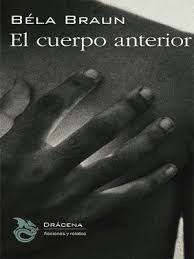
Original Language: English
Títutulu Original: The Snakehead
Year of publication: 2009
Translation: Eduardo Iriarte
Valoración: quite recommended
Another work by Radden Keefe that recovers in a timely manner and translates, seen the impact of some of them (especially Don’t say anything, that he has had the invaluable support of a transfer to the screen) and I must recognize that chronology is a bit of this process, although I do not know if that is a crucial detail, given the author’s attachment to his style, but this, in reality, would be his second book, therefore, to his works of more repercussion, but obvious link to a chain in which Radden Keefe, a little in the style of the style of the style of the style of the style of the style true crime Audiovisual, it seems to be defining its own genre, nothing against, although some purist will always come out that recriminated to not be creating something new Or, a certain extreme, that your books can be substituted by thorough searches in AI applications that come to compile and summarize everything there have been and for having on a specific topic and apply a certain literary criterion and a dosing of the suspense. That you know, by the way, that we are very close to all that.
Snake head It is a perfect reading for that certain moment when, for example, a fiction reader needs a certain disconnection of plots, of arguments that must be followed and whose key moments must be retained. I do not say that it is the classic light reading, that of the placid hammocks of the beach. But all Radden Keefe books could fit into that profile. How to sit before a screen to see well -pertreated reports, not always of issues that respond to a rabid news or a topic that raises passions, but that in the end end up awakening your interest, and we could even refer to a certain social alibi, because the victims of criminals are usually normal people: victims can be patients who seek that their pain is mitigated or can be citizens of Fujian to those who promise to those who promise to those who promise to those who promise to those who promise to those who promise to those who promise to those who promise to those who promise to those who promise to those who promise to be citizens.
Here we go back in time and the central event is the death of Chinese citizens for the sinking of a loading ship, in 1993, in which they traveled illegally from China to the US. How that fact allows you to follow and check how the mafia plots acted (it took the floor to come out) hidden behind humble businesses, how, although it is not cases of extreme violence – just some adjustments of accounts in calculated operations, the right thing so as not to attract attention more than necessary – how organizations operate. In this case, the one led by Sister Ping, who from the appearance of modest and anonymous shops located in Chinatown, built, also gaining the respect of her community that saw her as the reference person when help was needed, a criminal plot (and therefore, very lucrative, here the binomial greater risk = greater profitability works at full performance) that expanded her tentacles and was rooted in the Chinese community of the Chinese community. New Yorker, woven thoroughly and intelligently – testaferros, use of lawyers of succulent minutes to generate the legal tangle that prevented acting effectively to the disorganized official organizations responsible for controlling both migratory flows and criminality. Criminals of a profile more marked by his discreet cunning than for his cruelty, seen with benevolence for his community and, therefore, almost impenetrable in his organization chart, in his hierarchy, in his mode of operation.
More Radden Keefe books reviewed at Ulad, here
Source: https://unlibroaldia.blogspot.com/2025/08/patrick-radden-keefe-cabeza-de-serpiente.html


